Military Dogs & Handlers
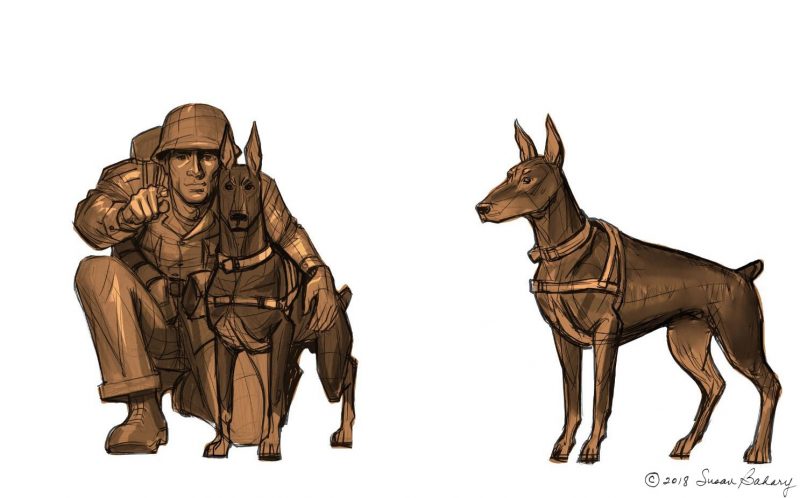
Kurt: Marine Dog of WWII
The conceptual sculpture of Kurt is shown in action and represents ALL of the war dogs and their handlers during WWII.
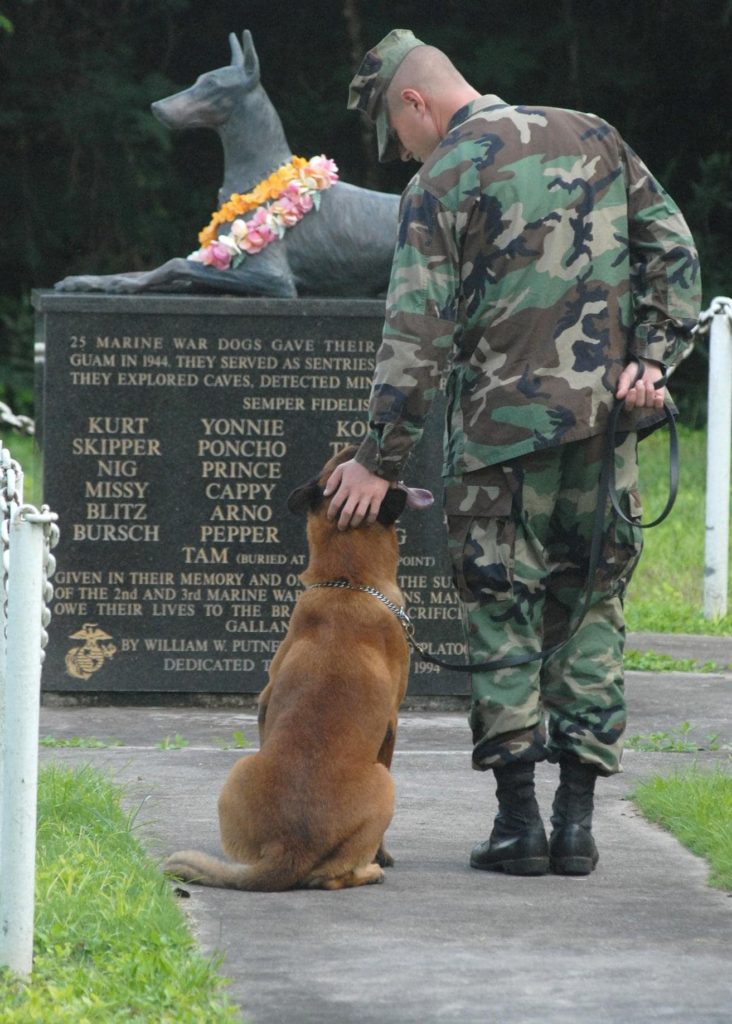
Kurt, a Doberman Pinscher, was a scout dog during WWII and is estimated to have saved the lives of 250 Marines on Guam. The War dogs of WWII served as scouts, sentries and messengers. They explored caves, detected mines, and revealed booby traps. Often they were able to silently alert to their handlers that the enemy was hiding nearby in caves, thus avoiding ambush. They were so effective in saving lives that all the platoons wanted to have war dogs to aid them. Sadly, Kurt gave the ultimate sacrifice. He was mortally wounded when he went ahead of the troops to alert them to the dangers ahead.
Artist Susan Bahary created a sculpture of Kurt, called “Always Faithful”. It features him in an upright reclining pose, alert and ready, and can be found at the US Marine Corps War Dog Cemetery on Guam. Castings of this memorial are also located in several museums and veterinary schools throughout the United States.
For more information, refer to Captain William W. Putney’s stirring book on his experience as commanding Officer and veterinarian of the 3rd War Dog Platoon on Guam, entitled Always Faithful – A Memoir of the Marine Dogs of WWII.
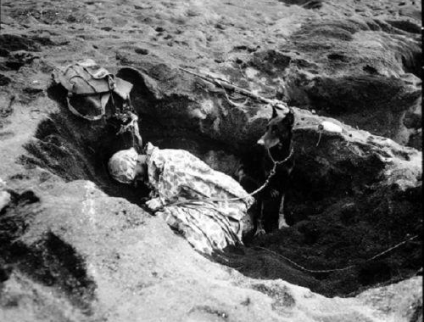
Vietnam Scout Dog
In the National Service Animals Memorial, the Vietnam Scout Dog is a symbolic tribute to the 4000 war dog heroes that served valiantly and saved many thousands of lives during the Vietnam War.
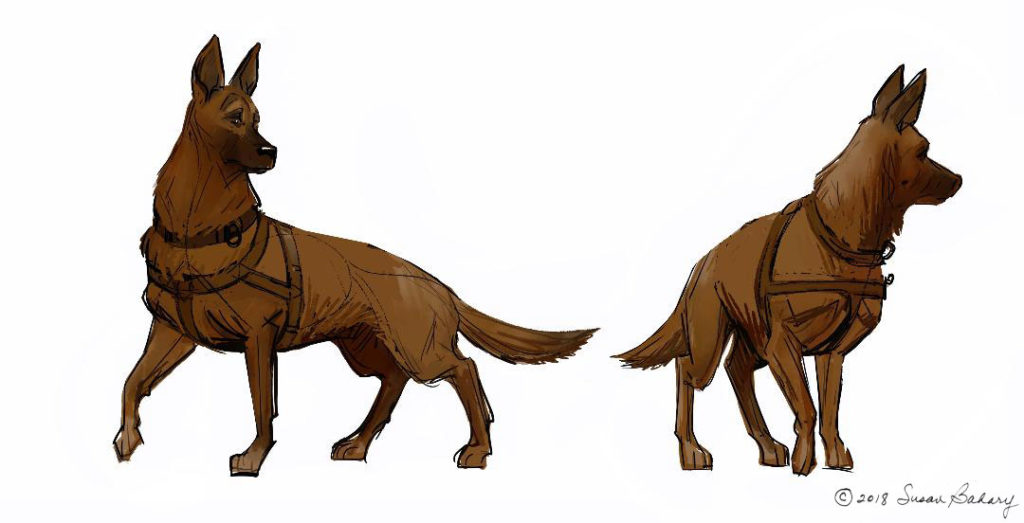
The role of a Vietnam Scout dog
Vietnam Scout dogs, accompanying their handlers, would lift off by helicopter for combat missions into enemy territory. Leading infantry patrols, they crossed log bridges and waded through muddy streams. Their keen senses of sight, smell, and hearing, coupled with their natural animals instincts, intelligence, and incredible loyalty enabled them to successfully detect snipers, booby traps, ambushes, underground tunnel complexes, and enemy weapons and supplies hidden in the jungle.
Many of the Vietnam war dogs were trained as sentry dogs, guarding the air fields, ammunition areas, supply depots, motor pools, and vulnerable base camp facilities, Devotedly keeping guard at the perimeter of base encampments, the dogs provided the soldiers with early silent warning of imminent or potential danger.
Some of the dogs were trained as trackers , who, working within five-man teams, were quietly inserted deep into enemy territory to perform dangerous reconnaissance missions gathering intelligence. They also searched for downed pilots and injured or dead troops missing in the jungle.
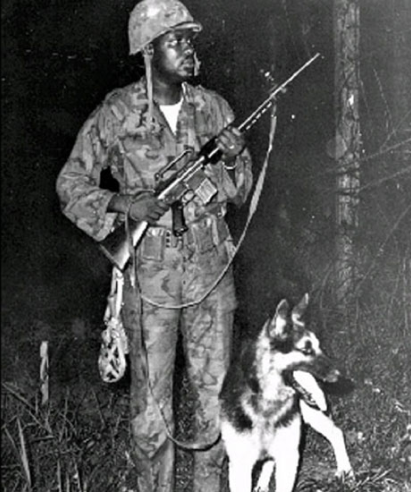
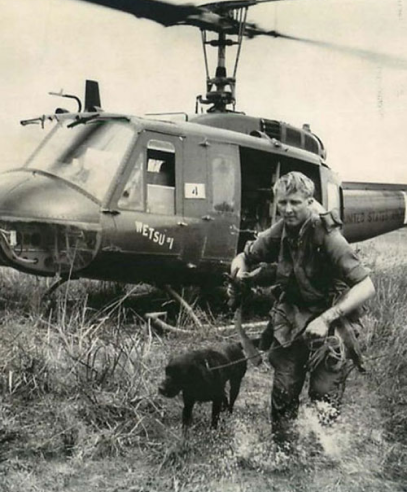
The Vietnam war dogs were justly credited for reducing American casualties on the battefields and saving countless lives over the course of the Vietnam ground war.
They were so effective that the enemy had placed a price tag on their heads in an effort to hunt them down.
When the Vietnam War ended in 1975 and U.S. forces pulled out, the majority of these heroic war dogs were left behind. The public outcry for the war dogs left behind in Vietnam was carried to congressional leaders in Washington DC by the late Dr. William Putney, Veterinarian and WWII Commander of the 1st Marine War Dog Platoon that helped to liberate Guam from enemy occupation. Dr. Putney’s efforts resulted in President Bill Clinton signing the War Dog Adoption Law (Public Law 106-446) on November 6, 2000. The U.S. Department of Defense can now officially retire military working dogs, allowing the dog’s military handler to have “first right of refusal” before the dog is placed for adoption with anyone else.
– Contributed by John Burnham
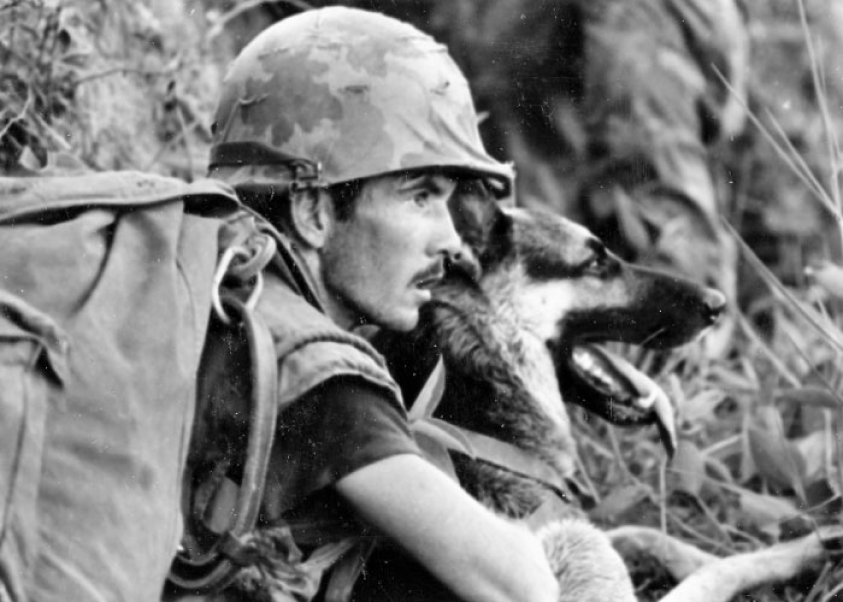
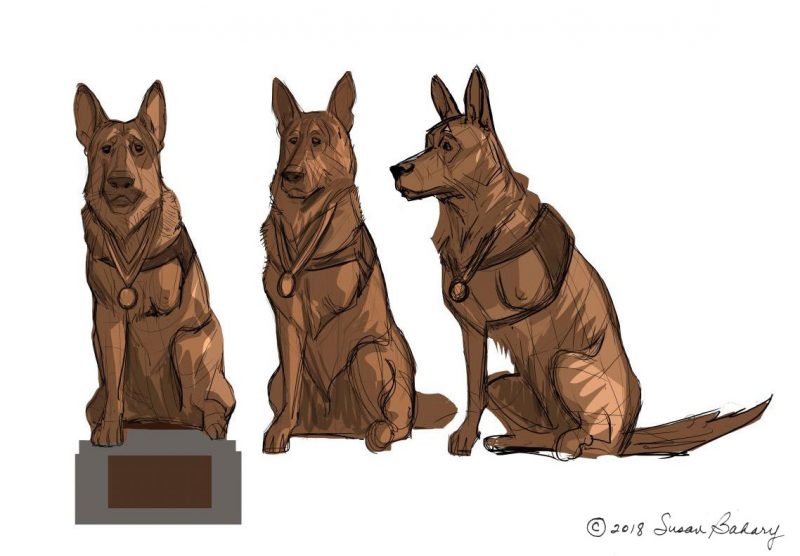
Lucca: Veteran of Iraq and Afghanistan
Lucca represents all war dogs. As a wounded war veteran from the conflicts in Iraq and Afghanistan, she also honors ALL animals and people with disabilities.
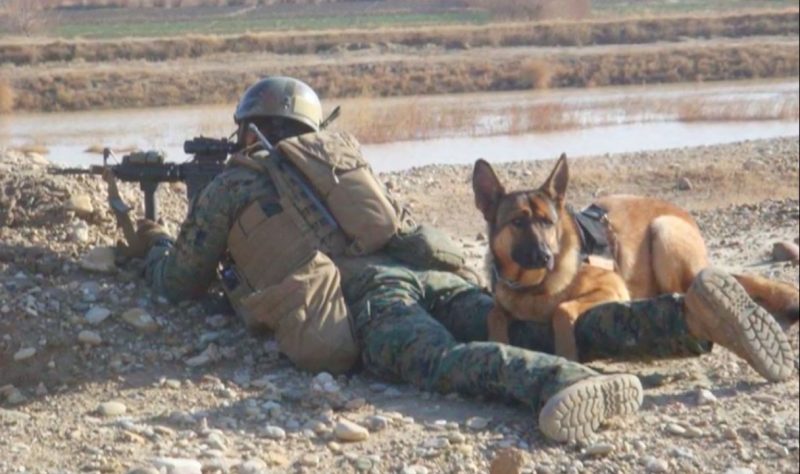
Her placement in the Monument is such that she is seen watching over the bridge leading to the Monument’s spectacular, engraved granite walls.
Lucca was a specialized search dog who served in the Marine Corps for 6 years, including two tours of Iraq and one in Afghanistan, leading over 400 patrols. Calm and stoic, she was always ready to walk point and accomplish the task at hand. Lucca is credited with over 40 explosive finds, saving thousands of lives with her incredible detection capabilities.
In 2012, Lucca was seriously injured while on patrol in Afghanistan with Corporal Rodriguez.
“The explosion was huge and I immediately feared the worst. I ran to her and saw her struggling to get up. I picked her up and ran to the shelter of a nearby tree line. I stayed with her constantly throughout her operation and her recovery. She had saved my life on so many occasions- I had to make sure that I was there for her when she needed me.”
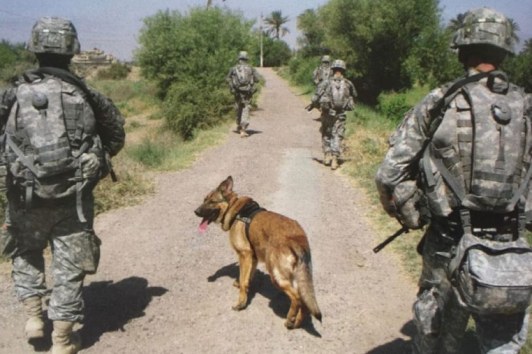
During her time in the Marine Corps, the faithful Belgian Malinois/German Shepherd mix had two handlers, Master Sergeant Chris Willingham and Corporal Juan Rodriguez.
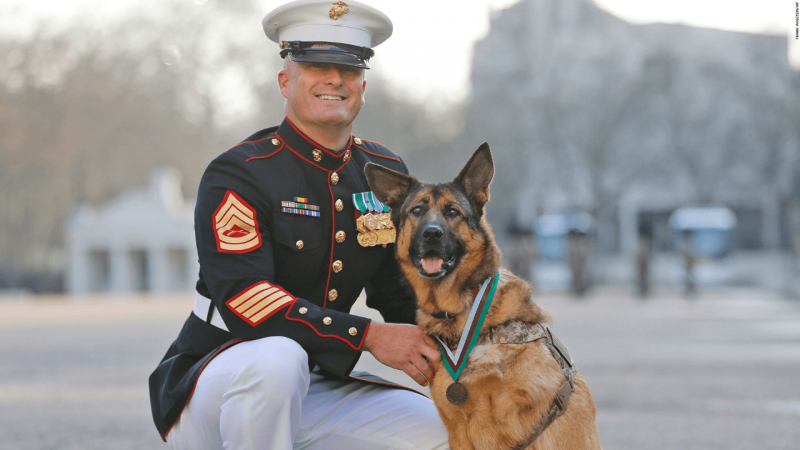
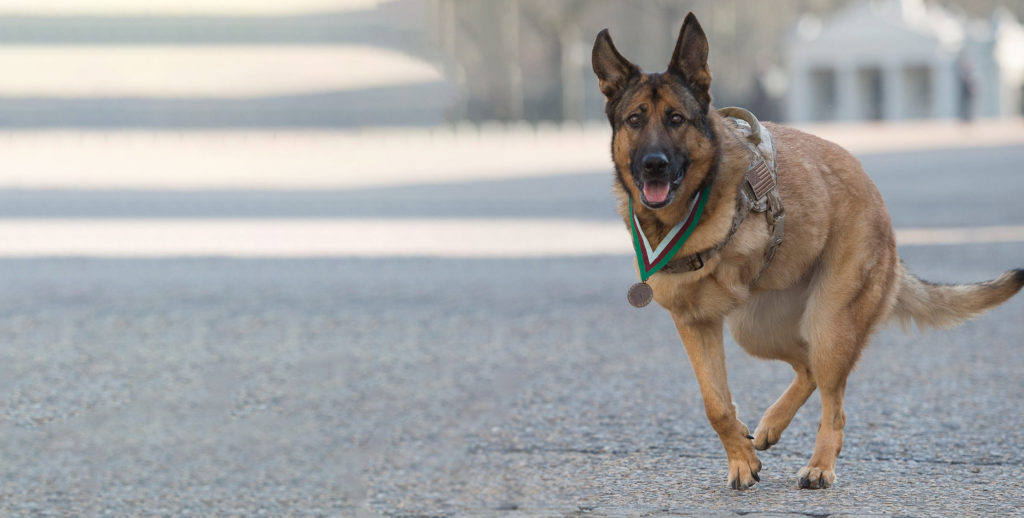
Let's Build it!
News
Contact Us
5662 Calle Real #105
Goleta, CA 93117
Email: info@NSAMproject.org
Phone: 202-774-1992
NSAM is a 501 (c)(3) non-profit organization.
EIN #27-4620979

